

Sri Lanka express anger at UN over war general
Major General Shavendra Silva is accused but not formally charged of war crimes (AFP/File, Ishara S. Kodikara)
-------
Two of Sri Lanka's Foulest War Crimes-If members of the UNHRC in Geneva haven't heard this one, they certainly should... this government was willing to wound, kidnap, rape and slaughter journalists.
Tim King Salem-News.com
If members of the UNHRC in Geneva haven't heard this one, they certainly should... this government was willing to wound, kidnap, rape and slaughter journalists.
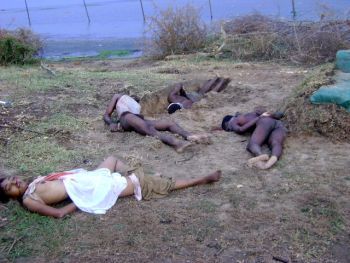 Body of reporter Shoba 'Isaippiriya' lies in foreground. |
(SALEM) - As we mourn the death of Sunday Times correspondent Marie Colvin, in Serbia, we recall her dedicated work in Sri Lanka;
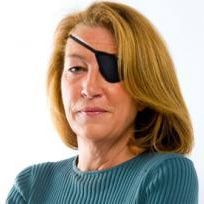 Marine Colvin - Sunday Times |
Marie was targeted by soldiers after identifying herself as a reporter. Resistance fighters with the LTTE (Liberation Tigers of Tamil Eelam) Tamil Tigers, said it was an act of deliberate targeting and cowardice.
"After she held up her press credentials, they lobbed a grenade at her," Marie's mother Rosemary Colvin told the Oyster Bay Pilot.
"She was arrested and tied up for 10 hours without medical care before the US State Department could get her out." This deliberate attempt to kill a civilian reporter followed by ten hours without medical care, constitutes a foul crime of war.
Timing is Everything
Now Sri Lanka's head hangs in a political guillotine as its leaders face the United Nations Human Rights Council in Geneva, Switzerland, for war crime violations. Colvin's death is tragic, and her name is added to a long list of reporters, photographers and other media representatives who have been killed covering war. Sadly one of the longest lists of reporters killed in war leads us back to Sri Lanka and as I noted in my article, Sri Lanka Tamil Genocide: Killing the Messenger, One sure way to keep a national genocide out of world view is to slay the journalists who would reveal the information.
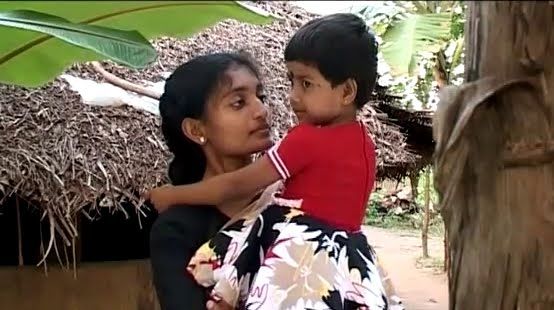 Shoba, who used the name 'Isaippiriya', has become familiar to many as a victim of the Sri Lanka Genocide. She was a journalist, singer & actor. |
While going over material sent to the newsroom this morning, I realized that I needed a new photo from the Sri Lanka Genocide of Tamils, not that I don't have several hundred, but I wanted something different, and in this process I ran into somebody I recognized. She isn't someone I actually know or had the pleasure of meeting, in fact sadly, it was a photo of her abused corpse that caught my attention. It was the body of Shoba, the young reporter who was Murdered in the horrific Genocide that raged across the north of this island from 2005 to 2009.
I have written about her, I've seen her image alive and she was beautiful, and talented, but mostly I've come to know her as a victim of the Sri Lanka army who was not only Murdered as a part of this government's ethnic cleansing program; she was raped, sexually brutalized, first.
This woman was only 27. Of course the government would tell you she was a "terrorist operative" because she worked for a television station operated by the famed Tamil Tigers. This resistance group officially known as the LTTE or Liberation Tigers of Tamil Eelam, protected the native population of Tamils, who account for only 15% to 20% of the population of Sri Lanka.
This is a shocking but extremely important video clip from Channel-4 in London, producers of 'Sri Lanka's Killing Fields' |
My question to all who support this war against the Tamil population is simple... was Shoba (and the tens of thousands of women killed) the real enemy, and did she deserve a bout of sexual depravity before being killed?
The argument drones on and on, Tamil Tigers are a terrorist group in that they absolutely did commit terrorist acts, a long list of them; however the violence began after Tamils had suffered 30 years of injustice. For three decades, the Tamils, who are mostly Hindu and partly Christian, practiced only a Gandhi-style form of non-violent resistance.
They did not want anything but autonomy, the desire was to form the breakaway state of Tamil Eelam and had they been able to, the Tamils would have secured among other things, equal rights and the preservation of their very culture, which was under threat on several fronts from the Buddhist Sinhalese government. It would have bruised the Sinhalese ego, but life could have gone on in harmony, I always believed that was the Buddhist way, but it is not, in the end all are the same human beings, incapable of resolving political strife without over controlling the minority population and too often resorting to violence..
While most Tamils live in India, Sri Lankan Tamils maintain words from the language that have been dropped from India, they have lived on Sri Lanka, or Ceylon as it was known for so many years under British occupation, for thousands of years. When the Tamils abandoned non-violent resistance, they struck government targets at first, but combat escalated greatly, and their culture became highly militaristic, that is a fact. The terrorist acts committed by the Tamil Tigers are horrific, but they were also an eventual, ultimate reaction.
A Life Cut Short
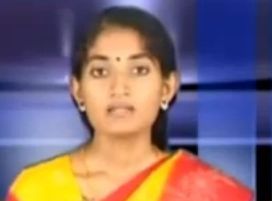 Shoba Isaippiriya |
 Isaippiriya was an LTTE media specialist |
Shoba's nom de plume was Isaippiriya, she was loved by many.
The Sri Lanka military designated Isaippiriya a 'Lieutenant Colonel' in the LTTE. It is a promotion she never received, in fact this young woman suffered from health problems, she was a media specialist with the LTTE who produced reports forTamilNet. She never picked up a weapon, however she would die violently at the hands of Sri Lanka Army's 53 Division, on 18 May 2009.
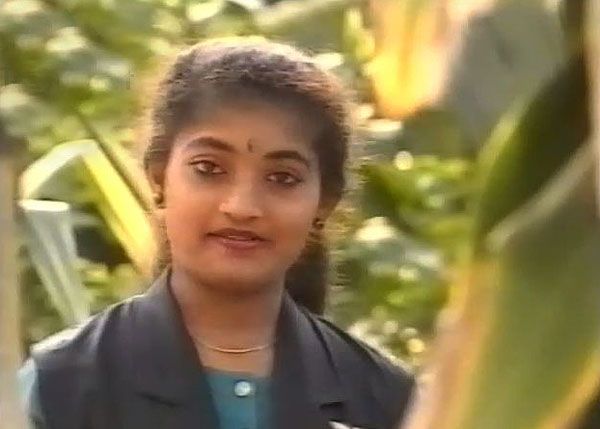 When Isaippiriya's body was found, she had been stripped naked, with her hands tied behind her back. She had been sexually assaulted and shot dead, as seen in a video released Channel-4 in London.
When Isaippiriya's body was found, she had been stripped naked, with her hands tied behind her back. She had been sexually assaulted and shot dead, as seen in a video released Channel-4 in London.She was TamilNet's Vanni correspondent. The LTTE did confirm that she had never taken part in military operations.
Shoba, a non-combatant, also lost her 6-month-old baby girl Akal |
A source told TamilNet:
| “ | I am able to learn through those who have been at Mu'l'livaaykkaal in the final days of war, that Shoba remained unarmed and did not take part in combat. | ” |
Isaippiriya, who was born in 1982, graduated from Veampadi Girls High School in Jaffna in 1996. After the outbreak of war, she continued her studies in Vanni until joining the LTTE's media division. Her family says she was a gifted dancer.
She never took a life, yet in addition to losing her own life in the war, Shoba lost her 6-month-old baby girl Akal, this happened in the last stage of the war as Sri Lanka's politicians directed the indiscriminate bombardments of civilians. Akal suffered aspiration while in a bunker during a bombing at Kfir, TamilNet reports, she was taken to a hospital and died on 15 March 2009.
Of her death, TamilNet wrote:
| “ | Isaippriyaa’s case is a clear instance, raising many pertinent questions on behalf of thousands of victims like her, pointing at not only towards the Rajapaksa regime for the war crimes, but also towards the war crimes responsibility of the international system, the UN and the administrations of several countries. | ” |
The loss of Isaippiriya is especially significant because she was a well-known media personality.
Yet her fate was the same as so many tens of thousands who perished violently and against their will, often in front of their parents and children, far before their earthly time was through. The intentional grenade wounding of Marie Colvin in 2001, and the terrible ethnic cleansing Murder and sex abuse of Isaippiriya, are two of Sri Lanka's foulest and most disgusting war crimes, not just targeting journalists, but women. That is the bottom of the barrel for any country.
Terrorism and Genocide
Regarding the acts of the Tamil Tigers, I am often asked by Sinhalese Sri Lankans, if I am aware of the history of the LTTE and the suicide missions they carried out over the years. I would venture to think that literally any writer who studies and researches this subject, would learn immediately that the Tigers are truly synonymous with the inception of suicide bombing.
However these acts listed below, as horrific as many are, do not justify the mass slaughter of up to 160,000 people, that is the number of Tamils who ceased to exist after the summer of 2009. It is true that many are being held in captivity, and also that the status a large number of these political prisoners of war, remains a mystery.
This information is from IRIN, humanitarian news and analysis - a service of the UN Office for the Coordination of Humanitarian Affairs, published as the conflict was still raging, on 28 April 2009: SRI LANKA: Conflict timeline
A chronology of key events
1972: Velupillai Prabhakaran forms a militant group called the Tamil New Tigers (TNT).
1976: TNT changes its name to the Liberation Tigers of Tamil Eelam (LTTE).
1983, 23 July: LTTE attacks an army patrol in Jaffna, killing 13 soldiers and sparking anti-Tamil riots around the country, leaving several hundred dead.
1985, 8 July: Talks held between the Sri Lankan government and the LTTE for the first time in Thimpu, Bhutan.
1987, 29 July: Indo-Sri Lanka pact signed between President JR Jayawardena and Prime Minister of India Rajiv Gandhi. India deploys peace-keeping force to north and east Sri Lanka.
1990, 24 March: India withdraws troops due to clashes with the LTTE killing more than 1,200 Indian troops.
1990 June: LTTE kills hundreds of policemen in the east following breakdown of talks between the Tigers and the government of President Ranasinghe Premadasa.
1991, 21 May: Gandhi killed, allegedly by an LTTE suicide bomber.
1993, 1 May: Premadasa killed by LTTE suicide cadres during a May Day rally in Colombo.
1995, January: Government of Chandrika Kumaratunge and LTTE agree to talks.
1995, April: Talks fail after the Tigers blow up two navy vessels.
1995, 2 December: Jaffna, the northern cultural and political nerve centre of the Tamils, falls under Sri Lanka army control.
1996, 31 January: Suicide bomb attack on the Central Bank building in the heart of Colombo kills more than 100 and injures 1,400.
1996, 24 July: Alleged LTTE bomb blast in a railway station in Dehiwela, south of Colombo, kills 70.
1996, 18 July: Army camp overrun by the LTTE near the northeastern town of Mullaitivu. More than 1,000 troops killed.
1998, 25 January: Suicide bomb attack on Sri Lanka's holiest Buddhist shrine, Dhaladha Maligawa (Temple of the Tooth), in the central town of Kandy, kills 17 people.
1998, 26 September: Tigers overrun Kilinochchi army camp, killing more than 1,000 government soldiers.
1999, December: LTTE attempts to assassinate President Chandrika Bandaranaike Kumaratunge; who survives.
2000, April: LTTE recaptures Elephant Pass, inflicting heavy damage on the Sri Lankan forces during the operation Unceasing Waves III.
2001, July: An LTTE suicide attack on Bandaranaike International airport kills 14.
2002, 22 February: Ceasefire agreement, brokered by Norway, signed by Prime Minister Ranil Wickremesinghe and LTTE leader Prabhakaran.
2002, December: Government and LTTE agree to share power at peace talks in Norway.
2003 April: LTTE pulls out of talks after six rounds of negotiations, citing inadequate steps taken to rebuild war-hit areas.
2004, 3 March: LTTE eastern military head, Vinayagamurthi Muralitharan, alias Karuna Amman, splits from the LTTE.
2005, 7 February: LTTE political head for the eastern Districts of Batticaloa and Ampara, E. Kousalyan, killed with three others in Batticaloa town.
2005, 12 August: Foreign Minister Lakshman Kadirgamar killed by suspected LTTE snipers in Colombo.
2005, 4 December: The LTTE commences claymore and grenade attacks targeting the Sri Lankan troops in the Jaffna peninsula.
2006, 15 June: More than 60 civilians killed in claymore mine attack allegedly by LTTE, targeting a civilian bus in Kebithigollewa, nearly 200km from Colombo.
2006, 20 July: LTTE closes the sluice gates at Mavilaru, south of the eastern coastal town of Trincomalee. Clashes erupt as army launches operations to gain control and succeeds.
2007, 5 January: Bomb attacks on public transport begin in Nittambuwa, about 20km east of Colombo, killing six people. Several bombs target public transport in the following months. The government blames the LTTE for the attacks.
2007, March: LTTE carries out its first air raid on Katunayake air base, about 20km north of Colombo. The Tigers also conduct an air attack on 29 April during the Cricket World Cup Final. The attack targets two fuel-storage facilities on the outskirts of Colombo. The Tigers carry out at least nine air attacks before 20 February 2009.
2007, 15 January: Military captures Vakarai, a coastal town in Batticaloa District in the Eastern province.
2007, 11 July: military captures Thoppigala, the last of the LTTE strongholds in the east after 13 years, thereby regaining the entire eastern province from the LTTE.
2007, 2 November: LTTE political wing leader SP Tamilselvan killed in an air raid by the Sri Lankan Air Force.
2008, 2 January: The government says it will withdraw from ceasefire agreement and does so on 14 January and intensifies attacks on the Tigers. The LTTE, however, states it will stick to the agreement.
2008, September: All international humanitarian agencies and their foreign staff operating in the LTTE-controlled Kilinochchi and Mullaitivu districts are ordered by the government to relocate to Vavuniya.
2009, 2 January: Government troops capture Kilinochchi, de-facto capital of the LTTE, after 10 years.
2009, 25 January: Mullaithivu town captured by government troops.
2009, 12 February: Government declares a 12km-long "no fire zone" (NFZ) along the Mullaitivu western coast and calls on civilians to move into it for their own safety.
2009, 20 February: The LTTE conducts a suicide air attack in Colombo.
2008 March: Sri Lankan troops launch operations to regain areas in the Vanni from the western flank. The number of civilians in the NFZ continues to grow.
2009, 14 April: LTTE says it is ready for negotiations, but the government refuses the offer, insisting it should lay down arms.
2009, 20 April: Thousands of civilians trapped in the NFZ cross into government-controlled areas where they are screened and placed in camps. Government gives LTTE 24 hours to surrender.
2009, 22 April: Former LTTE media coordinator Velayutham Dayanidhi, alias Daya Master, and the translator of former LTTE political wing head SP Tamilselvan, Kumar Pancharathnam, alias George, surrender to the military.
2009, 26 April: The LTTE declares a unilateral ceasefire as government forces surround an ever-shrinking NFZ. The government rejects the declaration, calling it a "joke". The UN estimates 50,000 civilians remain trapped in the NFZ.
2009, 27 April: Facing with diplomatic pressure to declare a ceasefire, Sri Lanka says its military is no longer using heavy weaponry and aerial bombing against the remaining few hundred rebels still fighting in the NFZ.
2009, 28 April: With more than 150,000 internally displaced persons (IDPs) in camps in Vavuniya, Jaffna, Mannar and Trincomalee, UN Emergency Relief Coordinator John Holmes urges that civilians who have been screened be given the chance to leave the camps and to rely on friends and family elsewhere.

